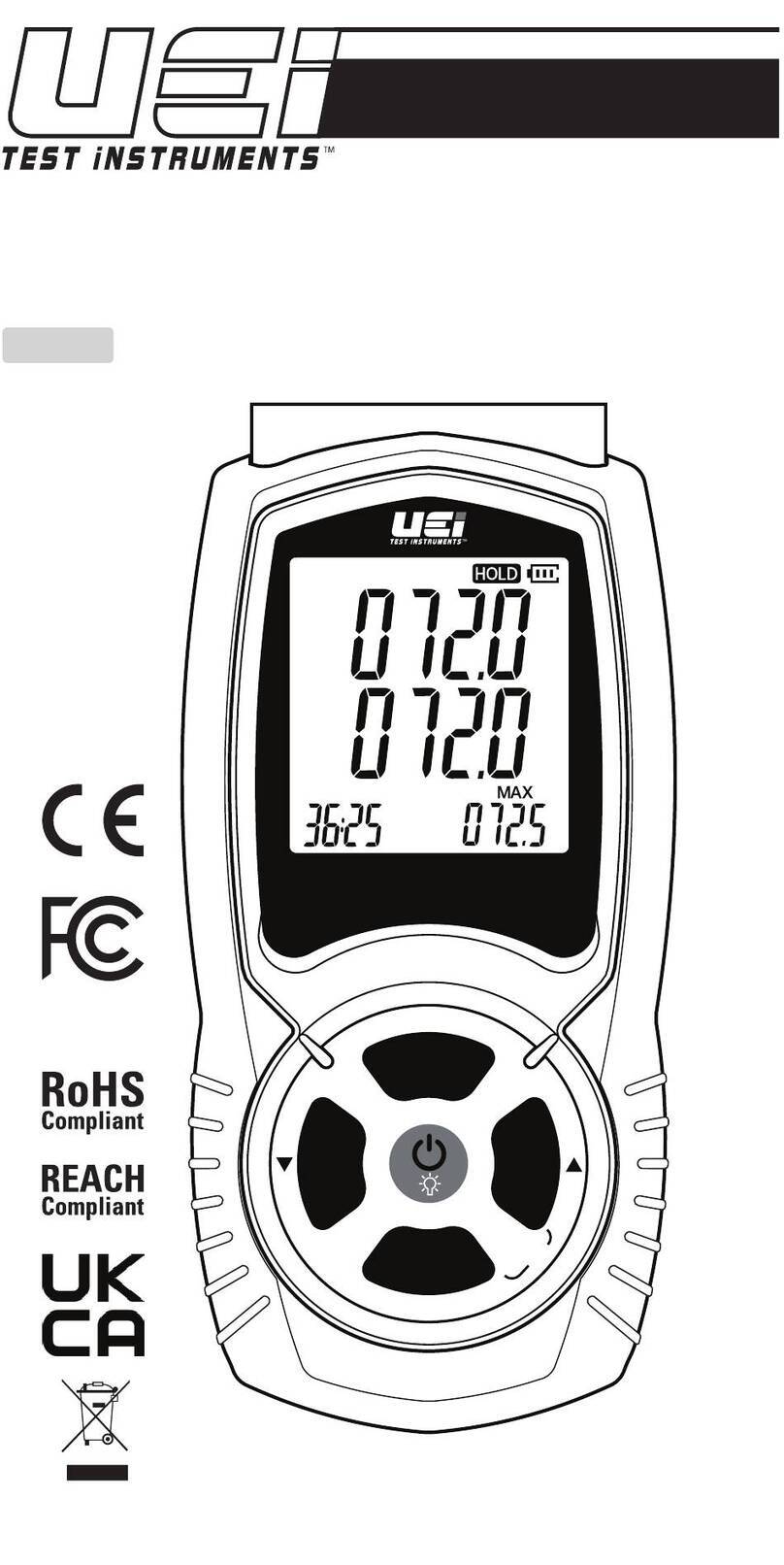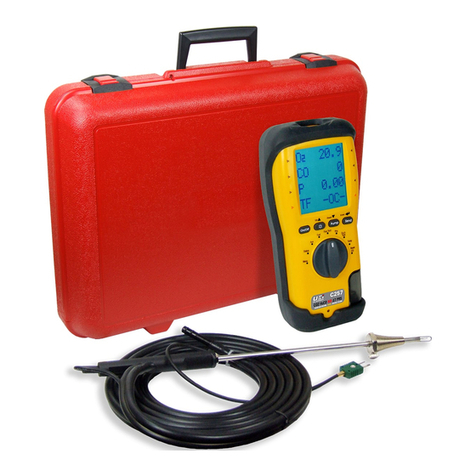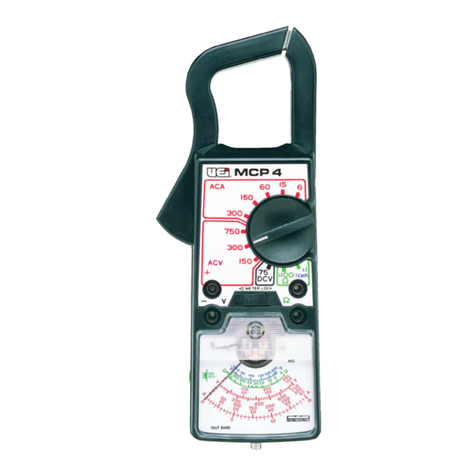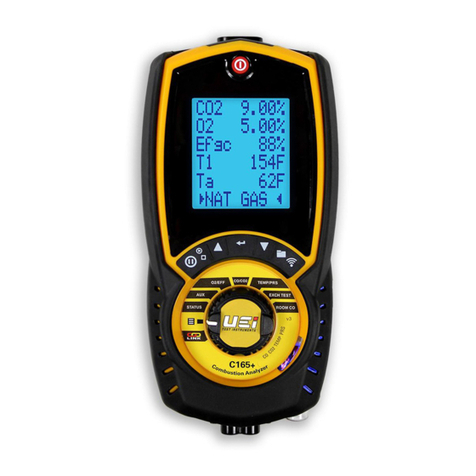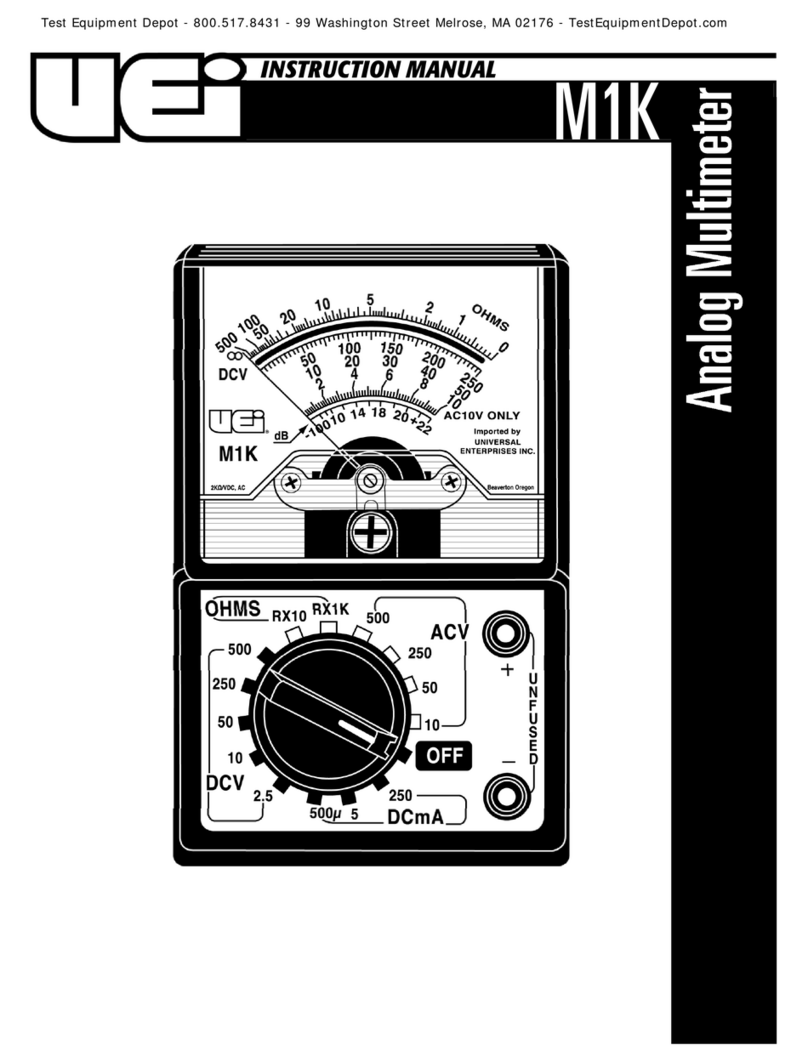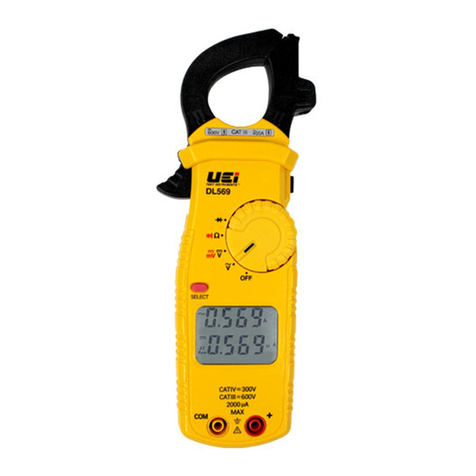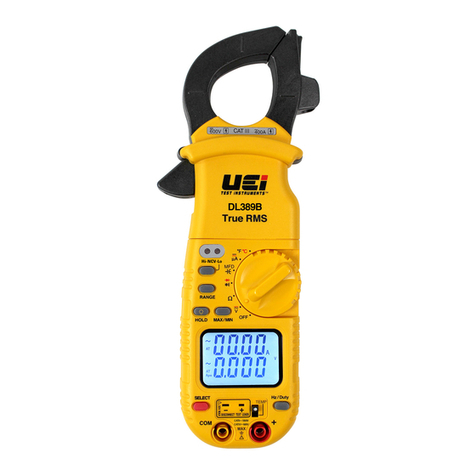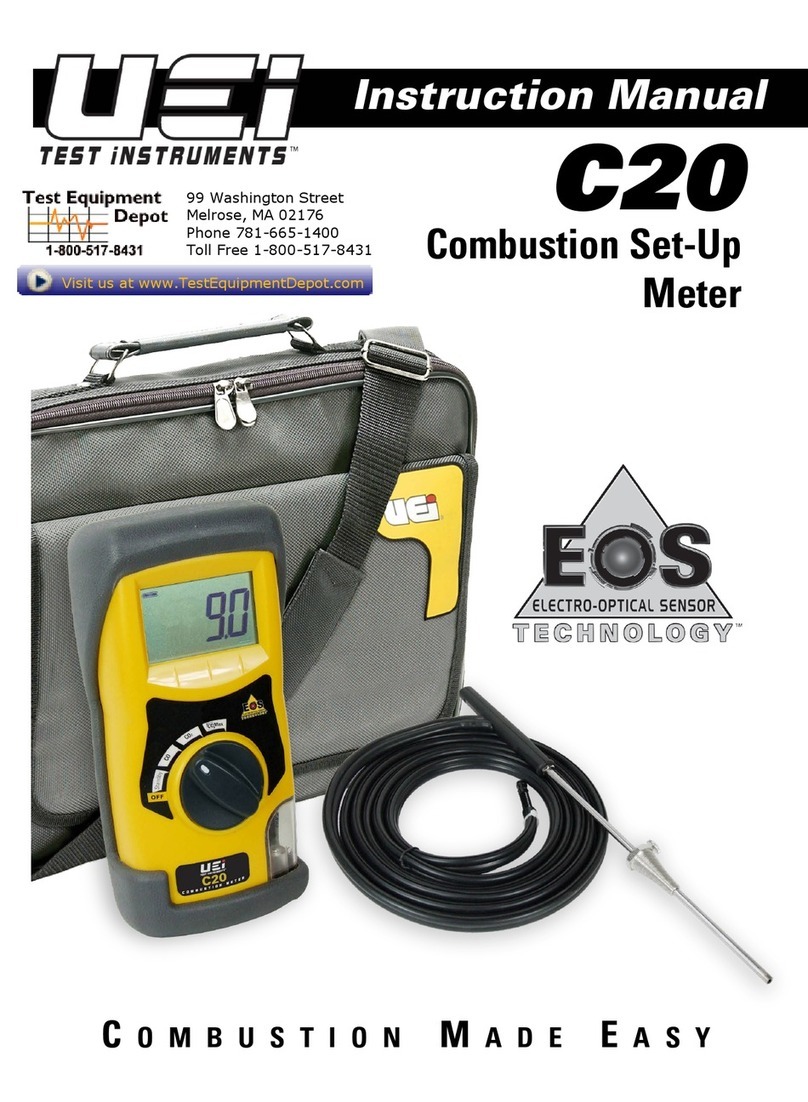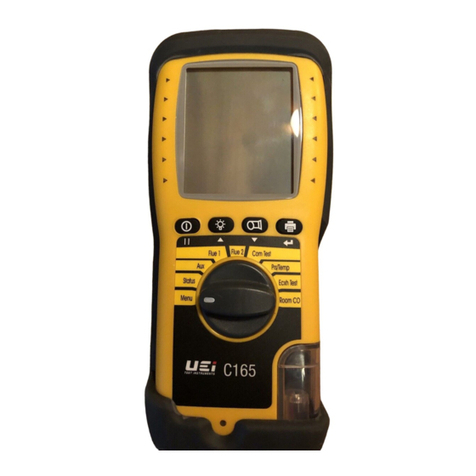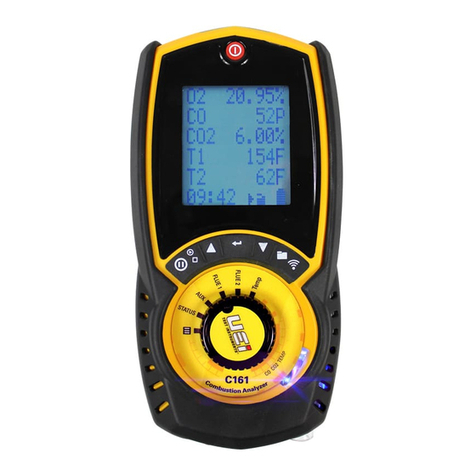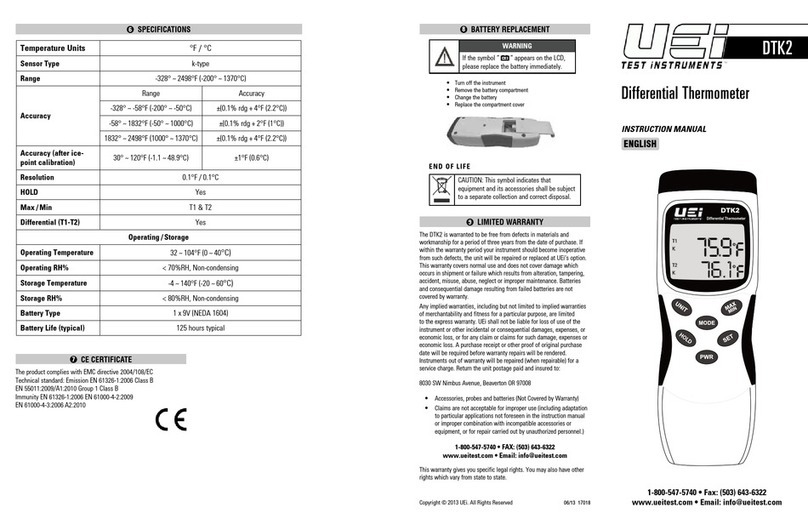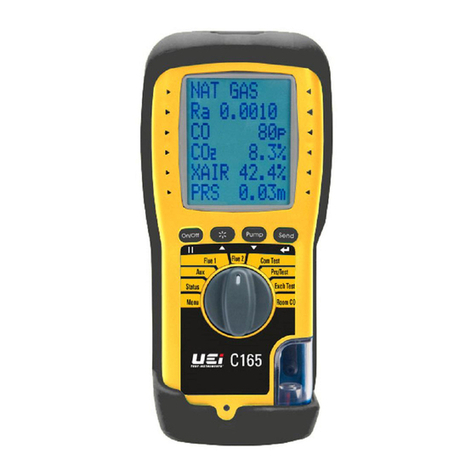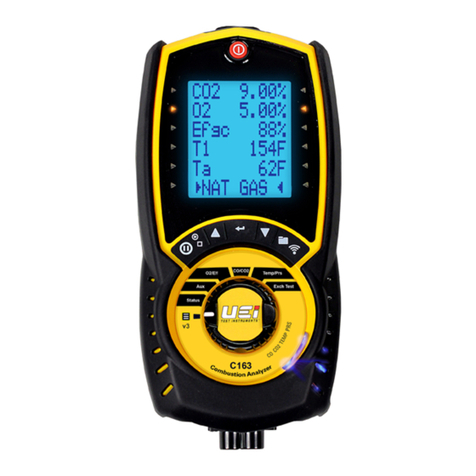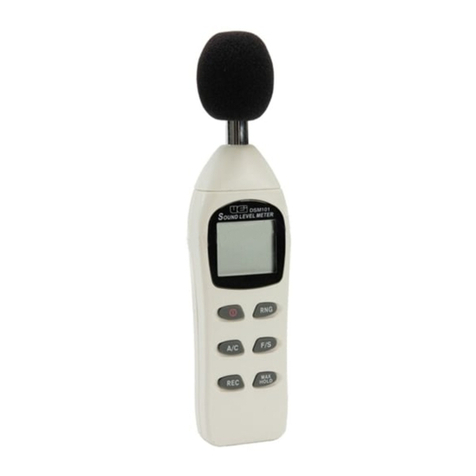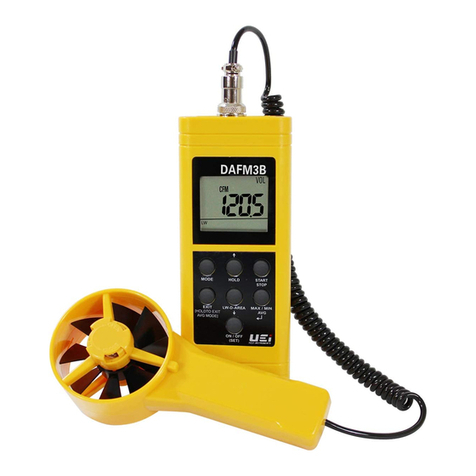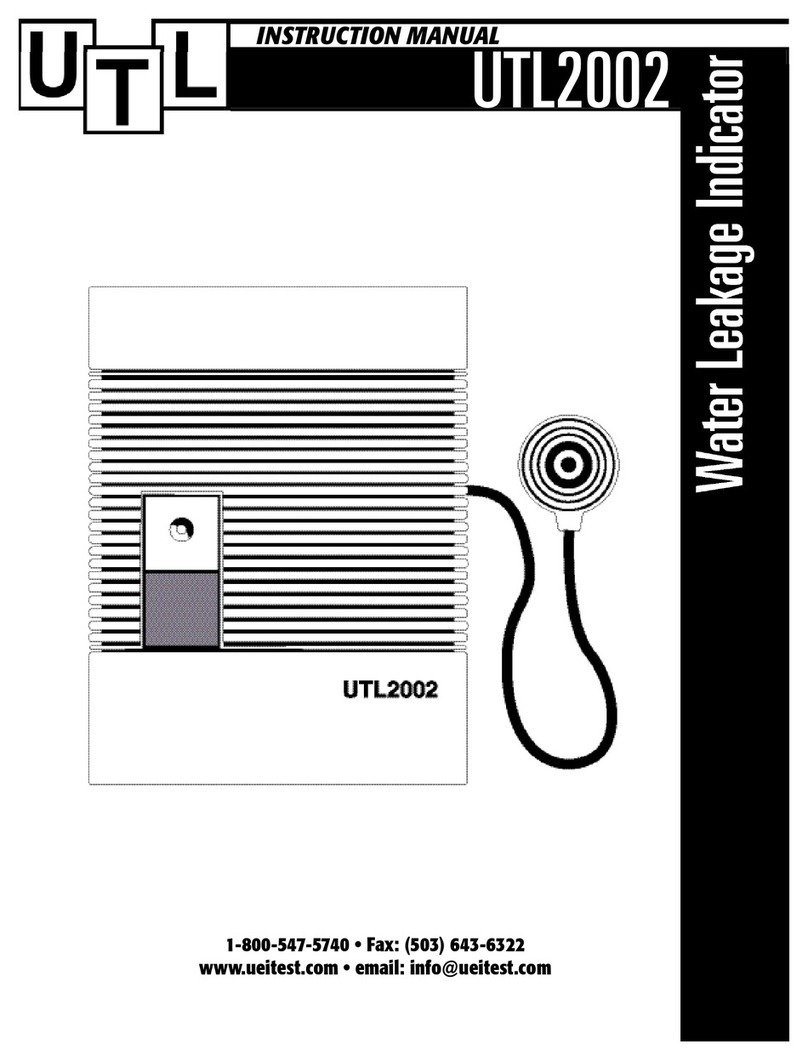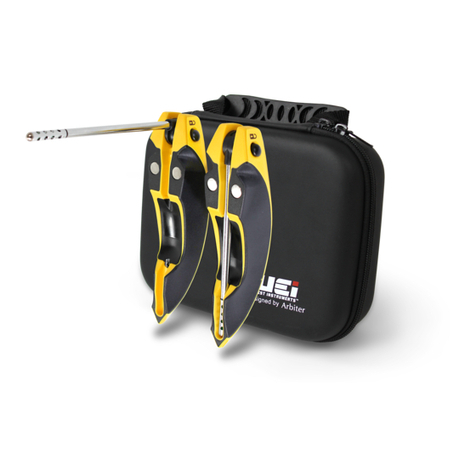6
OPERATING INSTRUCTIONS CONT.
• VOL – Air volume in CFM or CMM, based on dimensions entered
Note: Icon at bottom of screen will indicate the method used to
calculate volume (LW-Length/Width, D-Diameter, A – Area).
• AT – Ambient Temperature measured at the probe tip
• RH – Relative Humidity measured at the probe tip
• WBT – Wet Bulb Temperature calculated from measured
temperature and RH%
• DP – Dew Point Temperature calculated from measured
temperature and humidity
MEASURING AIR VOLUME (CFM OR CMM)
Measuring air volume with the DAFM4 has two steps. The first step is
to enter the characteristics of the area being measured. There are three
methods to enter this and depend on the location of your measurement.
If measuring square duct work (in-duct or exit) you would enter Length
and Width (LW). For round duct you would enter Diameter (D). If
measuring the exit with a grill it is recommended to use the effective
area or free area (A) from the grill manufacturer. If this is not known, the
air volume measurement will be an estimate. (See P. 9-10)
Note: Grill manufacturers often provide engineering data on
effective or free area. This is indicated as the Ak value.
ENTERING DUCT INFORMATION
1. Press MODE until VOL is showing in the upper right corner of the
display
2. Press LW-D-AREA until the desired method is showing in the
lower left corner of the display
3. Press MIN/MAX AVG ( ) to select this mode
a. Press (HOLD) to increase the value
b. Press (LW-D-AREA)to decrease the value
c. Press MIN/MAX AVG ( ) to accept the displayed value
Note: Press and hold to scroll through the values quickly.
Release and then press briefly to increase or decrease one
digit at a time.
After entering the duct characteristics you will be taken back to the
display for Air Volume. Hold the probe in the area to be measured for a
direct display of air volume.
www. .com information@itm.com1.800.561.8187












